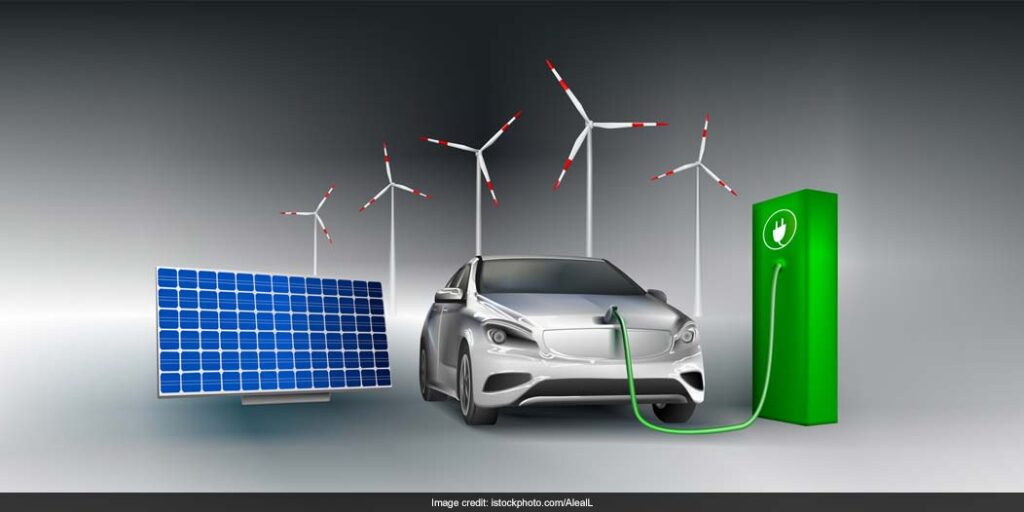Electric car infrastructure encompasses the network of charging stations and supportive technologies essential for the widespread adoption of electric vehicles (EVs). Central to this infrastructure are various types of charging stations, ranging from residential chargers to fast-charging stations located along highways and urban areas. These stations facilitate convenient recharging opportunities for EV owners, crucially addressing range anxiety—the fear of running out of battery power while driving. Additionally, advancements in infrastructure include smart grid technologies that optimize energy use and integration with renewable energy sources, promoting sustainability. As the demand for electric vehicles continues to rise globally, expanding and enhancing this infrastructure remains critical to enabling seamless and efficient electric mobility for all drivers.

Electric car infrastructure plays a pivotal role in facilitating the widespread adoption and viability of electric vehicles (EVs) in today’s transportation landscape. The term “electric car infrastructure” encapsulates the network of charging stations, supportive technologies, and policies necessary to support the growing fleet of electric vehicles and to address the unique needs of EV owners.
At the core of electric car infrastructure are charging stations, which serve as the primary means for EV owners to recharge their vehicles’ batteries. These stations come in various forms, including residential chargers installed at homes, workplace chargers in office complexes, and public chargers strategically located in urban areas, shopping centers, and along major highways. The diversity in charging options is crucial in accommodating different usage patterns and addressing the range anxiety often associated with electric vehicles. Level 1 chargers, typically found in homes, provide slow but steady charging overnight, while Level 2 chargers, common in workplaces and public spaces, offer faster charging times. High-power DC fast chargers, located at service stations and highway rest areas, provide rapid charging capabilities that can significantly reduce downtime during long-distance travel.
The expansion and accessibility of electric car infrastructure are key focus areas for governments, businesses, and utility companies alike. Governments around the world are implementing policies and incentives to encourage the installation of charging stations and to support the growth of electric vehicle ownership. These initiatives include grants for infrastructure development, tax incentives for charger installations, and mandates for new buildings to include EV charging provisions. Such measures aim to build a robust charging network that meets the needs of current and future EV drivers, thereby promoting cleaner transportation options and reducing greenhouse gas emissions from the transport sector.
Technological advancements are also driving innovation in electric car infrastructure. Smart charging solutions, for instance, enable EV owners to schedule and optimize charging times based on electricity rates and grid demand, helping to alleviate strain on the power grid during peak periods. Vehicle-to-grid (V2G) technology takes this concept further by allowing electric vehicles to discharge stored energy back into the grid during times of high demand, providing grid stability and potentially offsetting charging costs for consumers.
Moreover, the integration of renewable energy sources into electric car infrastructure is increasingly becoming a priority. Many charging stations are now equipped with solar panels or are connected to nearby renewable energy sources, such as wind or hydroelectric power plants. This trend not only reduces the carbon footprint associated with electric vehicle charging but also promotes sustainable energy practices within the transportation sector.
In addition to physical infrastructure, the development of supportive services and amenities is essential for enhancing the EV ownership experience. This includes digital platforms and mobile apps that provide real-time information on charging station availability, compatibility with different EV models, and payment methods. Integration with navigation systems and trip planners also helps EV drivers efficiently plan routes that include charging stops, minimizing inconvenience and ensuring a seamless travel experience.
As the demand for electric vehicles continues to grow, so too does the need for expanded and interconnected electric car infrastructure. Collaboration among stakeholders—including governments, automakers, energy providers, and technology firms—is essential to overcome barriers such as funding constraints, regulatory challenges, and consumer adoption hurdles. Public-private partnerships have proven effective in leveraging resources and expertise to accelerate the deployment of charging infrastructure and promote EV adoption on a larger scale.
Looking ahead, the evolution of electric car infrastructure will continue to evolve rapidly. Anticipated advancements include ultra-fast charging technologies capable of delivering full charges in minutes, further reducing charging times and enhancing convenience for EV owners. Innovations in battery technology, such as solid-state batteries with higher energy density and faster charging capabilities, hold promise for extending vehicle range and reducing dependency on charging infrastructure.
In conclusion, electric car infrastructure represents a critical component of the transition towards sustainable transportation systems. The term “electric car infrastructure” encompasses not only physical charging stations but also the supportive policies, technologies, and services that collectively enable the widespread adoption and successful integration of electric vehicles into everyday life. By investing in robust and interconnected infrastructure, stakeholders can effectively address the challenges and seize the opportunities presented by the electric mobility revolution, paving the way towards a cleaner, greener future for transportation globally.


















8 Comments